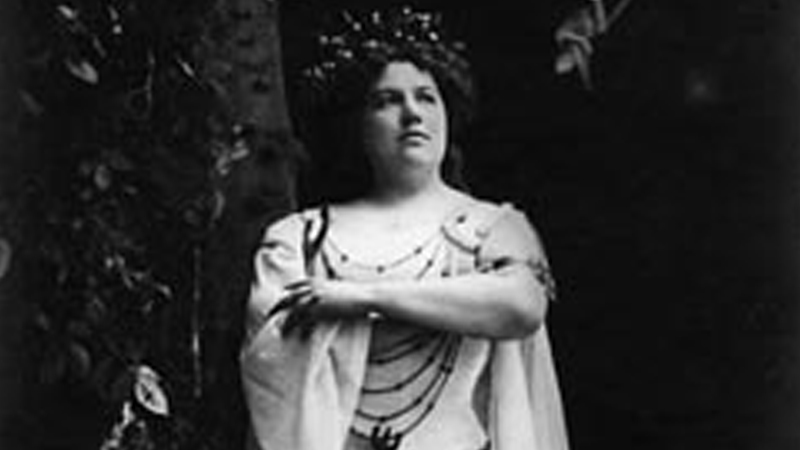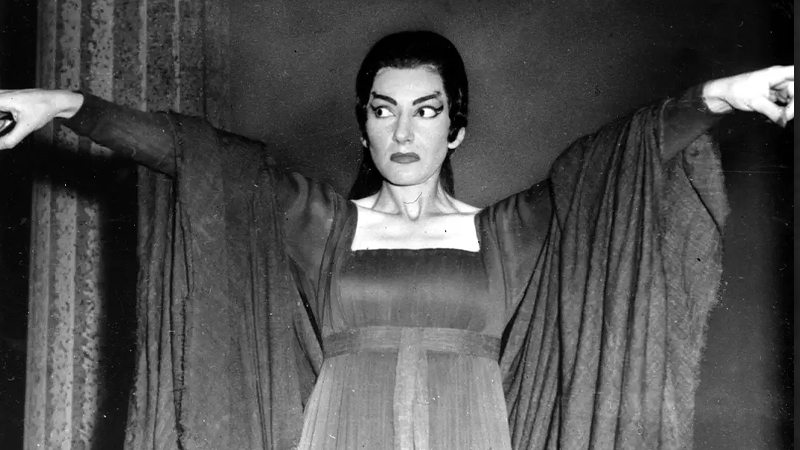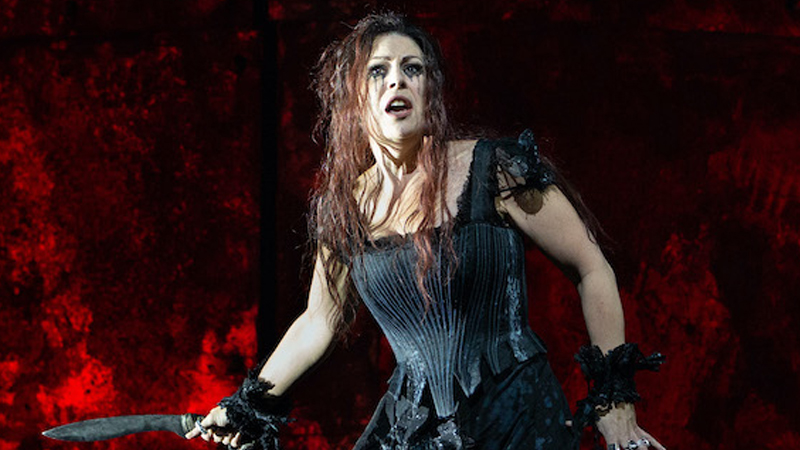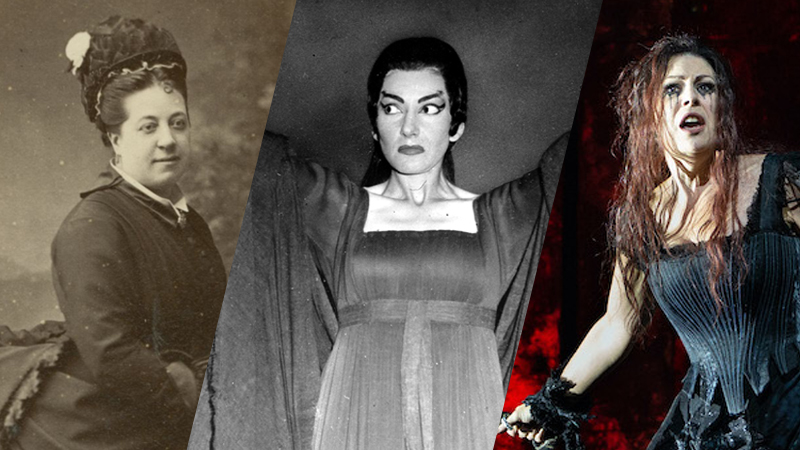An inspiration to playwrights and composers for over two thousand years, the character of Medea—a spurned sorceress who takes revenge on her unfaithful ex-lover in a shocking act of violence—presents one of the most physically and artistically daunting roles for any performer.
Cherubini’s
Medea is today considered the ultimate vehicle for truly great sopranos: a challenge comparable to the role of Hamlet for actors, in which the profound psychological struggle between love and hatred arouses our sympathy and horror in equal measure. Demanding both vocal skill and physical endurance, the part is considered one of the most difficult in the entire operatic repertoire—and only a few in the opera’s two hundred-year history have been up to the task.
Read on to discover some of the role’s most notable performances, as well as the stars of our upcoming production, and be sure to join us for this landmark event when
Medea opens on May 3!
Julie-Angélique Scio (1768-1807) was a leading French soprano who sang the role of Medea at the opera’s Paris premiere in 1797. Born in Lille and married to the composer Etienne Scio, she had made her debut in Paris only five years earlier but would go on to create several of Cherubini’s defining soprano characters, including the title roles in Eliza and Médée and Constance in Les deux journées.
At the premiere performance, Médée was sung in French with spoken dialogue interspersed throughout. Its troubling content and emotional complexity was unlike anything that had been seen on the operatic stage before, and audiences were initially unsure what to make of it. Nevertheless, the opera earned the high regard of composers including Beethoven and Schumann, with Brahms calling it “the work that we musicians recognize among ourselves as the highest peak of dramatic music.”

Thérèse Tietjens (1831-1877) was reputed to have a vocal span of three octaves and trained in Hamburg and Vienna before making her home in London, where she quickly became known as the country’s leading dramatic soprano. She performed the role of Medea at the opera’s 1865 United Kingdom premiere, at which both Cherubini’s son and grandson were in attendance. Showcasing her rare vocal and dramatic ability at Her Majesty’s Theatre in a performance that was glowingly reviewed in
The Times, Tietjens would go on to make this her hallmark role throughout the 1870s and 1880s.

Carlo Zangarini’s Italian translation of Cherubini’s Medea, featuring new recitatives that replaced the spoken dialogue, premiered at the Teatro alla Scala in 1909 and would later become the most performed version of the opera. Ester Mazzoleni (1883-1982) was the first to perform the title role in the Italian translation. Despite having initially planned on a painting career, Mazzoleni made her singing debut in 1902 and was appearing on the great Italian stages within the next few years.
After achieving success in Spain and South America, she retired in 1926 and devoted the rest of her life to teaching in Palermo. Considered by many to be one of the greatest sopranos of the early 20th century, Mazzoleni was honoured last year in her native city of Šibenik, Croatia with a giant gramophone sculpture in her memory, on the 140th anniversary of her birth.

The hybrid Italian version of Medea was revived in 1953 in Florence for the legendary American-born Greek soprano Maria Callas. Undoubtedly the most famous 20th-century revival of the work, this production was conducted by Vittorio Gui and starred Callas, who is reputed to have learned the role in just one week. Teatro alla Scala staged it again during the opening week of its 1953-54 season, again with Callas in the lead role and Leonard Bernstein conducting.
Callas continued to perform Medea throughout the 1950s and 1960s, including in a 1959 London revival that featured a fellow Greek producer (Alexis Minotis), Greek designer (John Tsarouchis), and Greek bass (Nicola Zaccaria). The production also appeared in Dallas, as well as at the Ancient Theatre of Epidaurus in 1961. Performances at La Scala in 1961-62 would be among Callas’ last appearances in Italy.
Following Callas’ defining performances, the role has attracted several of the world’s leading sopranos—including Eileen Farrell, Montserrat Caballé, and Gwyneth Jones. In the 21st century, Anna Caterina Antonacci performed the Italian version in a Turin performance that was released on DVD.

The same version was performed for the first time at the Metropolitan Opera in 2022, starring Sondra Radvanovsky. Described by director Sir David McVicar as “one of the few sopranos in the world that could take this on,” Sondra is an internationally celebrated soprano widely regarded as a leading interpreter of bel canto and verismo styles.
Gifted with a “voice of almost immeasurable quality” (OperaWire), as well as supreme dramatic ability, Sondra made the role of Medea her own in the Met run, and we can’t wait to see her bring her powerful interpretation of this tortured character to our stage this spring.

Sharing the role with Sondra is Italian soprano Chiara Isotton, who has been a bright star in the opera world ever since graduating from the La Scala Academy in Milan in 2015. In the past year, Chiara has sung the roles of Mimi in La fanciulla del West at Opera National de Lyon; the title role in Fedora at Metropolitan Opera; and Fiora in L’amore dei tre re at La Scala. Having taken on major roles at some of the most prestigious opera houses in the world, where she has captured the attention of globally renowned artistic teams, she makes her Canadian and COC debut this spring in Medea.

 Thérèse Tietjens (1831-1877) was reputed to have a vocal span of three octaves and trained in Hamburg and Vienna before making her home in London, where she quickly became known as the country’s leading dramatic soprano. She performed the role of Medea at the opera’s 1865 United Kingdom premiere, at which both Cherubini’s son and grandson were in attendance. Showcasing her rare vocal and dramatic ability at Her Majesty’s Theatre in a performance that was glowingly reviewed in The Times, Tietjens would go on to make this her hallmark role throughout the 1870s and 1880s.
Thérèse Tietjens (1831-1877) was reputed to have a vocal span of three octaves and trained in Hamburg and Vienna before making her home in London, where she quickly became known as the country’s leading dramatic soprano. She performed the role of Medea at the opera’s 1865 United Kingdom premiere, at which both Cherubini’s son and grandson were in attendance. Showcasing her rare vocal and dramatic ability at Her Majesty’s Theatre in a performance that was glowingly reviewed in The Times, Tietjens would go on to make this her hallmark role throughout the 1870s and 1880s. Carlo Zangarini’s Italian translation of Cherubini’s Medea, featuring new recitatives that replaced the spoken dialogue, premiered at the Teatro alla Scala in 1909 and would later become the most performed version of the opera. Ester Mazzoleni (1883-1982) was the first to perform the title role in the Italian translation. Despite having initially planned on a painting career, Mazzoleni made her singing debut in 1902 and was appearing on the great Italian stages within the next few years.
Carlo Zangarini’s Italian translation of Cherubini’s Medea, featuring new recitatives that replaced the spoken dialogue, premiered at the Teatro alla Scala in 1909 and would later become the most performed version of the opera. Ester Mazzoleni (1883-1982) was the first to perform the title role in the Italian translation. Despite having initially planned on a painting career, Mazzoleni made her singing debut in 1902 and was appearing on the great Italian stages within the next few years.


